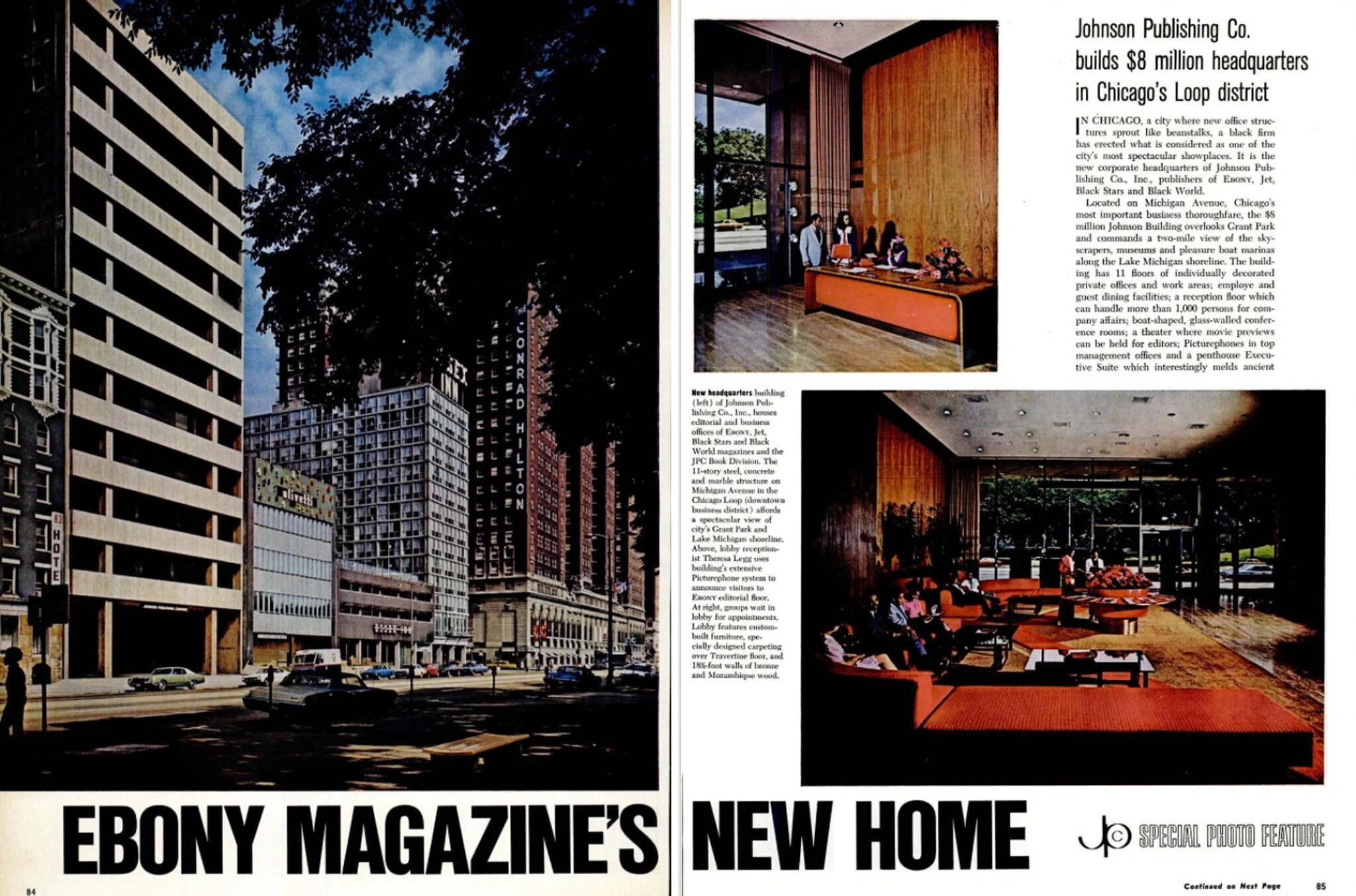Johnson Publishing Company
Photo credit: The Johnson Publishing Company Building in Chicago, photographed in 1972.Credit...Chicago History Museum, Hedrich-Blessing Collection
The 25 Most Significant Works of Postwar Architecture
Three architects, three journalists and two designers gathered over Zoom to make a list of the most influential and lasting buildings that have been erected — or cleverly updated — since World War II. Here are the results.
12. John W. Moutoussamy’s Johnson Publishing Company Building in Chicago (1971)
The first high-rise building in downtown Chicago designed by a Black architect, the Johnson Publishing Company Building was erected to house the offices of the media magnate John H. Johnson. Conceived by the pioneering Chicago architect John W. Moutoussamy, with interiors by Arthur Elrod and William Raiser, the tower housed the offices for epoch-making magazines like Jet and Ebony, which reflected and shaped the tastes of countless Black Americans. Rising 11 stories over South Michigan Avenue, the building has a powerful sense of proportion and rhythm, with panels of concrete that seem to float between bands of recessed windows. Inside, Elrod and Raiser filled the space with the declarative colors and opulent textures of their time: Wall-to-wall leopard print carpeted the Jet offices, and in the 22-foot-high lobby, an abstract bronze by Richard Hunt, among the city’s most prominent sculptors, hung from one of the wood-paneled walls. In the iconic ovular test kitchen for Ebony, earth-toned whorls of olive, ocher and rust papered the walls and cabinet fronts, a proud expression of Afrofuturist psychedelia. From the outside in, the Johnson Publishing Company Building was unabashedly luxurious, rigorous in its optimism — a declaration of Black progress throughout the 20th century. (In 2010, the Johnson Publishing Company moved out of the building, and in 2019 it was converted to apartments.) That so few high-rises by Black architects have joined Moutoussamy’s most important work on the American skyline is a testament to just how far the profession still has to go.
Mori: Moutoussamy was a student of Mies van der Rohe’s at Illinois Institute of Technology and, as you know, the Johnson Publishing archive is completely preserved and The Getty Institute and The National Museum of African American History and Culture are managing it. So the building has this really important history; it’s one of the most complete manifestations of African American aesthetics from that time. You can see Mies’s influence, but it’s really one of the most significant buildings in Chicago, with its beautiful proportions.
Soller: There was a phenomenal art collection inside, right?
Mori: Yes, it was quite amazing. I don’t know why that’s not happening today: complete buildings, designed with interiors.
A feature in the September 1972 issue of Ebony magazine introducing the new Chicago headquarters of the Johnson Publishing Company. Credit...Via the September 1972 Ebony magazine/Johnson Publishing Company
Read more on the other buildings at the NYTimes link below: https://www.nytimes.com/2021/08/02/t-magazine/significant-postwar-architecture.html

